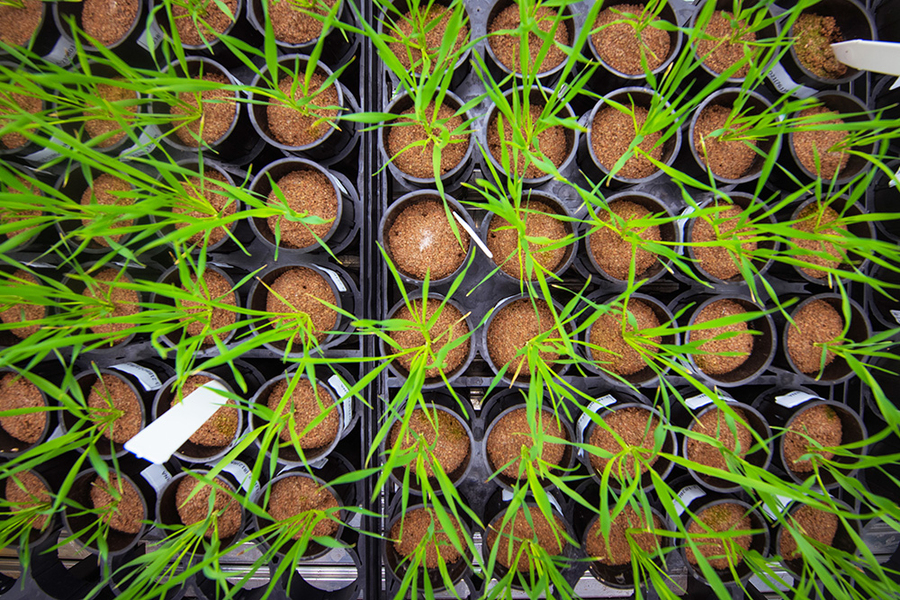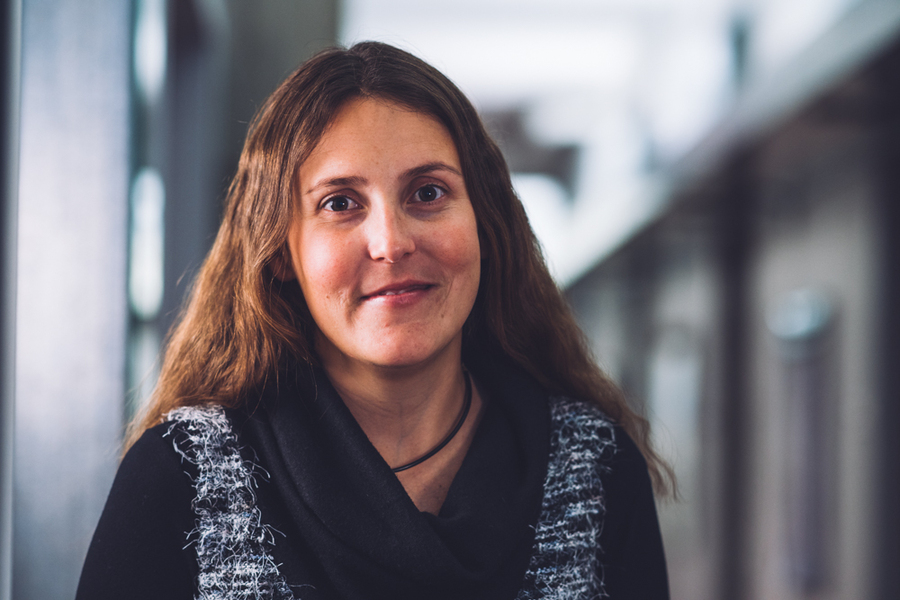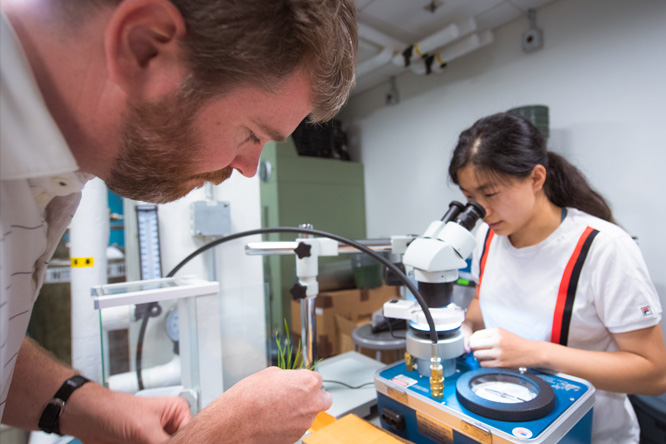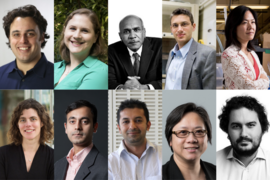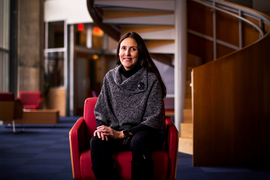Any houseplant owner knows that changes in the amount of water or sunlight a plant receives can put it under immense stress. A dying plant brings certain disappointment to anyone with a green thumb.
But for farmers who make their living by successfully growing plants, and whose crops may nourish hundreds or thousands of people, the devastation of failing flora is that much greater. As climate change is poised to cause increasingly unpredictable weather patterns globally, crops may be subject to more extreme environmental conditions like droughts, fluctuating temperatures, floods, and wildfire.
Climate scientists and food systems researchers worry about the stress climate change may put on crops, and on global food security. In an ambitious interdisciplinary project funded by the Abdul Latif Jameel Water and Food Systems Lab (J-WAFS), David Des Marais, the Gale Assistant Professor in the Department of Civil and Environmental Engineering at MIT, and Caroline Uhler, an associate professor in the MIT Department of Electrical Engineering and Computer Science and the Institute for Data, Systems, and Society, are investigating how plant genes communicate with one another under stress. Their research results can be used to breed plants more resilient to climate change.
Crops in trouble
Governing plants’ responses to environmental stress are gene regulatory networks, or GRNs, which guide the development and behaviors of living things. A GRN may be comprised of thousands of genes and proteins that all communicate with one another. GRNs help a particular cell, tissue, or organism respond to environmental changes by signaling certain genes to turn their expression on or off.
Even seemingly minor or short-term changes in weather patterns can have large effects on crop yield and food security. An environmental trigger, like a lack of water during a crucial phase of plant development, can turn a gene on or off, and is likely to affect many others in the GRN. For example, without water, a gene enabling photosynthesis may switch off. This can create a domino effect, where the genes that rely on those regulating photosynthesis are silenced, and the cycle continues. As a result, when photosynthesis is halted, the plant may experience other detrimental side effects, like no longer being able to reproduce or defend against pathogens. The chain reaction could even kill a plant before it has the chance to be revived by a big rain.
Des Marais says he wishes there was a way to stop those genes from completely shutting off in such a situation. To do that, scientists would need to better understand how exactly gene networks respond to different environmental triggers. Bringing light to this molecular process is exactly what he aims to do in this collaborative research effort.
Solving complex problems across disciplines
Despite their crucial importance, GRNs are difficult to study because of how complex and interconnected they are. Usually, to understand how a particular gene is affecting others, biologists must silence one gene and see how the others in the network respond.
For years, scientists have aspired to an algorithm that could synthesize the massive amount of information contained in GRNs to “identify correct regulatory relationships among genes,” according to a 2019 article in the Encyclopedia of Bioinformatics and Computational Biology.
“A GRN can be seen as a large causal network, and understanding the effects that silencing one gene has on all other genes requires understanding the causal relationships among the genes,” says Uhler. “These are exactly the kinds of algorithms my group develops.”
Des Marais and Uhler’s project aims to unravel these complex communication networks and discover how to breed crops that are more resilient to the increased droughts, flooding, and erratic weather patterns that climate change is already causing globally.
In addition to climate change, by 2050, the world will demand 70 percent more food to feed a booming population. “Food systems challenges cannot be addressed individually in disciplinary or topic area silos,” says Greg Sixt, J-WAFS’ research manager for climate and food systems. “They must be addressed in a systems context that reflects the interconnected nature of the food system.”
Des Marais’ background is in biology, and Uhler’s in statistics. “Dave's project with Caroline was essentially experimental,” says Renee J. Robins, J-WAFS’ executive director. “This kind of exploratory research is exactly what the J-WAFS seed grant program is for.”
Getting inside gene regulatory networks
Des Marais and Uhler’s work begins in a windowless basement on MIT’s campus, where 300 genetically identical Brachypodium distachyon plants grow in large, temperature-controlled chambers. The plant, which contains more than 30,000 genes, is a good model for studying important cereal crops like wheat, barley, maize, and millet. For three weeks, all plants receive the same temperature, humidity, light, and water. Then, half are slowly tapered off water, simulating drought-like conditions.
Six days into the forced drought, the plants are clearly suffering. Des Marais' PhD student Jie Yun takes tissues from 50 hydrated and 50 dry plants, freezes them in liquid nitrogen to immediately halt metabolic activity, grinds them up into a fine powder, and chemically separates the genetic material. The genes from all 100 samples are then sequenced at a lab across the street.
The team is left with a spreadsheet listing the 30,000 genes found in each of the 100 plants at the moment they were frozen, and how many copies there were. Uhler’s PhD student Anastasiya Belyaeva inputs the massive spreadsheet into the computer program she developed and runs her novel algorithm. Within a few hours, the group can see which genes were most active in one condition over another, how the genes were communicating, and which were causing changes in others.
The methodology captures important subtleties that could allow researchers to eventually alter gene pathways and breed more resilient crops. “When you expose a plant to drought stress, it's not like there's some canonical response,” Des Marais says. “There's lots of things going on. It's turning this physiologic process up, this one down, this one didn't exist before, and now suddenly is turned on.”
In addition to Des Marais and Uhler’s research, J-WAFS has funded projects in food and water from researchers in 29 departments across all five MIT schools as well as the MIT Schwarzman College of Computing. J-WAFS seed grants typically fund seven to eight new projects every year.
“The grants are really aimed at catalyzing new ideas, providing the sort of support [for MIT researchers] to be pushing boundaries, and also bringing in faculty who may have some interesting ideas that they haven’t yet applied to water or food concerns,” Robins says. “It’s an avenue for researchers all over the Institute to apply their ideas to water and food.”
Alison Gold is a student in MIT’s Graduate Program in Science Writing.
